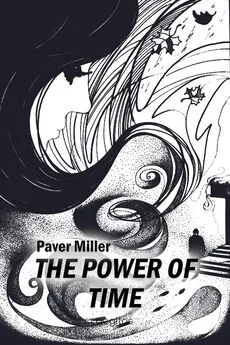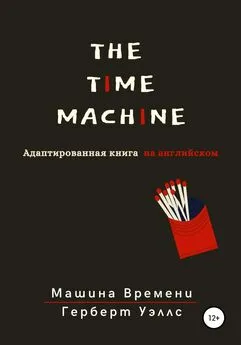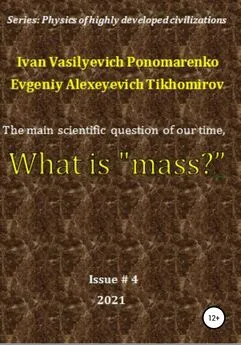Totraz Lolaev - Brief History of the Objective Time
- Название:Brief History of the Objective Time
- Автор:
- Жанр:
- Издательство:неизвестно
- Год:2021
- Город:Saint Petersburg
- ISBN:9785996516209
- Рейтинг:
- Избранное:Добавить в избранное
-
Отзывы:
-
Ваша оценка:
Totraz Lolaev - Brief History of the Objective Time краткое содержание
Brief History of the Objective Time - читать онлайн бесплатно ознакомительный отрывок
Интервал:
Закладка:
Totraz Petrovich Lolaev
Brief History of the Objective Time
Introduction
The objectivity of time is the most important and the least studied issue concerning the problem of time. In other words, it regards to the existence or non – existence of time in the objective reality.
In this regard, this article justifies the existence of the objective time in nature theoretically and experimentally.
We begin the consideration of the objectivity of time by looking into the contemporary body of literature.
According to the outstanding American theoretical physicist Lee Smolin, the majority of scientists believe that time is an illusion.
Both the great theoretical physicist A. Einstein and the famous mathematician G. Minkowski considered time a fiction.
The American scientist N. Lippincot notes, “Everything – cognitive abilities, logical formulas, and scientific methods – becomes impotent facing the mystery of time. Time is something inconceivable… the thinkers of all ages were unable to understand the great mystery of time. There is no real solution to this problem” [1] Lippincott H. H. Eternal Life. – “The Personalist” (Los Angeles), 1960, vol. 41, N 1, p. 39–40.
.
According to the Russian specialist in the issue of time V. N. Zima, the question “what is the objective time?” remains unresolved in philosophy and science [2] Zima V. N. The problem of objectivity of time in philosophy. M.: Prometheus, 2019.
.
The emergence and existence of the objective real, functional time in nature
All the concepts of time, including those of classical physics and the theory of relativity, are commonly known to be postulated and created by human mind. There is nothing corresponding to them in nature. Besides, those concepts interpret time in different ways. In our opinion, there is the only time in nature, it is the objective and real, functional time.
In this regard, this article studies the essence of the objective and real, that is, in author’s terms, functional time, which emerges and exists in nature and is not determined by a person’s consciousness.
According to our functional concept of time, a successive change in the whole new states of every tangible object and process (every object – process) determines a current duration, with that of the objective and real, functional time being its specific reflection. [3]
In other words, every specific object or process determines its own time, in which it exists. The fact is that the successive qualitative changes in a process inevitably result in a certain current duration, with that of the objective and real, functional time being its specific reflection.
It follows that time is the result of the functioning process. Consequently, time is a function of the process. Thus, time is not a universal form of matter, but a function of specific tangible objects and processes. [4]
The movement as a simple displacement does not determine the objective and real, functional time. The motion determines the emergence of time only in the observer’s mind, which makes it subjective.
Time emerges with objects and ends with the embodiment of their physical essence into subsequent objects. Object and time are inseparably associated. However, object has a physical essence and, in this regard, is a primary notion. While time is non – substantial (meaning it is neither a thing, nor a field, nor a special temporary substance). Therefore it is a secondary and derivative notion.
Since the functional time is formed by real objects having physical essence, it has a physical meaning.
Even Aristotle considered time following movement and in connection with it. In his opinion, nature is the origin of movement, and it is followed by time. [5]
Aristotle fairly pointed out both the objectivity of time and its non – substantialness stating that “time is not a movement, but it does not exist without the latter”. [6]
However, it was A. Einstein who recognized the non – substantialness of time in physical theory. He rejected the Newton’s substantial time and proposed the relational concept that sees time as non – substantial and not a physical essence.
G. Hegel also linked time with objects and processes. He wrote, “Things disappear not because they exist in time, but because they are temporary. Consequently, the process of actual things constitute time”. [5]
G. Hegel fairly asserted, “Everything is said to emerge and become in time… but it is not in time where everything emerges and becomes, rather time itself is emergence and becoming”. [6]
According to G. Leibniz, “time without things is only a perfect potentiality”. [7]
However, Hegel, like some other researchers who anticipated the concept of the objective and real, functional time (including Aristotle, Augustine, Leibniz, Bergson, Vernadsky, Einstein, etc.), did not completely reveal the mechanism of the connection between time and motion.
According to the functional concept, time is determined by all objects of micro-, macro- and megaworld.
Since the time is determined by specific objects, processes, it is always proper.
The existence of the objective and real, functional time can be illustrated by any visual physical process.
For instance, when a person observes a drop of ink falling into a glass of pure water, the process of merging causes a time – related perception in a person’s mind.
However, the process of merging the drop of ink and the water is successive qualitative changes that determine the objective and real, functional time. Moreover, in the first case is about the subjective time that only exists in the observer’s consciousness, while the second case regards to the objective and real, functional time that exists in nature.
In this example, the proper functional time emerges in a real experiment and exists independently of a person’s consciousness, while the process proceeds as such. In this regard, a current duration emerges regardless of the observer. Thus, it is nature that makes a specific physical process time – related and a subject that creates time perception for motion.
It follows that an object in motion can have time – related properties only from the observer’s perspective. The functional time results from a sequential change in whole new states of any object (both in motion and at rest).
In addition, if one observes ice turning into water, the observer perceives this process through the subjective flow of time.
However, what really is happening is the transition from one qualitative state into another subsequent one, which determines the emergence of the objective and real, functional time.
The objective existence of the functional time can be verified even if real processes are observed indirectly, i. e. through a microscope.
Let us refer to one more example. It also justifies that every object determines its proper objective and real, functional time. It is known that all medicines expire within certain timeframe of 2, 3, 4 years, etc. (the form it is stated in itself deduces that every object has its proper time, in which it exists, otherwise it would be impossible to determine the expiry date of each specific medicine).
When a medicine expires, it loses its medical properties. In other words, medicines exist until it expires. In case of pills, for example, when they expire, they stop being a medicine and start determining their proper time as a physical objects.
It should also be noted that the functional time results from motion as a reason for becoming. The becoming should be understood as a substantial change associated with the emergence of something qualitatively new as well as the emergence and disappearance of objects and their states, along with their transformation into other objects and their states. The becoming that makes something that has not existed become existing.
The objective and real time is called functional due to the very existence of time and all its properties depend on successive qualitative changes in specific physical objects resulting from the realization of their potentialities and their interaction with the environment.
Thus, the temporal rhythm and current durations of successively changing states of an object or a process depend on those of the successive whole new changes in the physical objects or the process that determine them.
Since time as it is does not exist, beyond physical objects or processes that disappeared upon the embodiment of their physical potentiality in subsequent objects, their proper time is deprived of the physical meaning.
For being non – substantial, time must emerge with specific physical objects or processes before it can exist. Given that the functional time is determined by the period between the emergence of real physical objects until they disappear (upon the embodiment of their physical essence into other subsequent objects). Then, as already mentioned, new subsequent physical objects or processes determine their proper time in which they exist due to the non – substantialness of time.
The objective and real, functional time is determined by all objects or processes in nature, from an elementary particle to the cycles of expansion and compression of the Universe, if it switches back, since in this case the cycles of the Universe emerge and terminates.
Even if the Universe, that embraces all the objectively existing world, switches back, it does not determine time, since time is always finite, while, according to all scientific and practical data, the Universe is uncreated and indestructible. In this regard, the concept of time is inapplicable.
Alternating days and nights cannot be considered the functional time, since they are a consequence of the mechanical rotation of the Earth.
Alternating years cannot be considered the functional time either, since a year is the result of a complete rotation of the Earth around the Sun, that is, the result of a simple displacement.
Days, nights and years are the subjective time, since they emerge and exist only in the consciousness of a person.
There are a lot of micro and macro processes occurring in any object as a result of the realization of its potentialities and its interaction with the environment. However, the time of an object does not represent the totality of the times emerged at various levels of the matter’s structural organization. The proper time of an object is determined by a complex of qualitatively new changes occurring in the single whole.
A human being, who as any other object determines their own time, can illustrate the external manifestation of changes in a single whole. In this case, there is childhood, adolescence, youth, etc.
The term “proper time” is also known to be used in the theory of relativity. Through the lens of this theory, proper time is measured with a “good clock” associated with a body in motion. While the proper functional time could be measured with a “perfect clock” capable of accurately repeating the rhythm and duration of successive changes in qualitatively new states of an object or a process. In practice, though, the functional time can be measured with an ordinary clock with the account of the specific process course, that is the rhythm and the current durations determined by its successively changing qualitatively new states.
The proper time of the theory of relativity emerges only in case of an intellectual experiment. For this reason, it is the subjective time. If the observer is removed from the intellectual experiment, the temporal relationship will no longer emerge, since the postulated time, imagined by a person, emerges only in their consciousness. If there is no one observing the motion of a body, an object, there will be no association with a “good clock” that would measure the proper time.
Читать дальшеИнтервал:
Закладка:
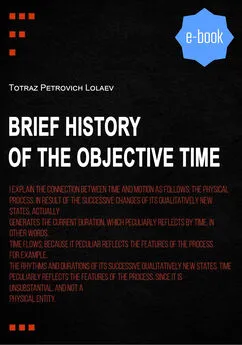


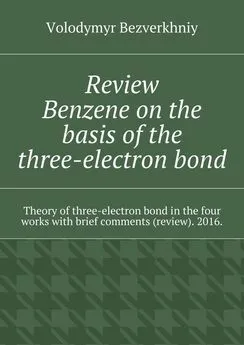
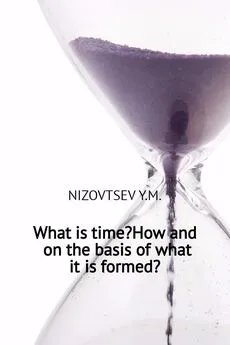
![О Генри - Недолгий триумф Тильди [The Brief Debut of Tildy]](/books/1083325/o-genri-nedolgij-triumf-tildi-the-brief-debut-of.webp)

